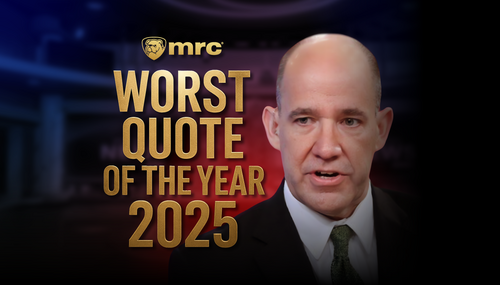If Jeff Bezos really wants to make the Washington Post a non-partisan paper, he still has a lot of work to do because on Wednesday, the Post tried to rebut President Donald Trump and say it is inaccurate to say that there are only two sexes.
Reporters Kelsey Ables and Mark Johnson didn’t just speak for themselves; they tried to roll out some impressive-sounding professors to boost their case. First, “Maurine Neiman, a University of Iowa professor who has studied the biology of reproduction for 25 years, said: ‘While there are some areas of active debate, scientists are in wide agreement that biological sex in humans as well as the rest of life on earth is much more complicated than a simple binary.’”
Then there was “Eve Feinberg, a professor of obstetrics and gynecology at Northwestern University, echoed the sentiment. ‘It’s scientifically incorrect,’ she said of the order. ‘And I think it’s a disservice to people who don’t fall into one of those two sexes.’”
Less scientific was “Michael Ulrich, a professor of health law at Boston University, said Trump’s executive order is in all likelihood targeting transgender people. ‘It’s trying to explain away people,’ he said. ‘They want to try to present it as this extremely simple issue — as if it’s really just one or the other, you’re male or you’re female.’”
If you are not male or female, what are you? Well, “The Gender Equity Unit at Johns Hopkins University defines sex as ‘the biological and physiological reality of being male or female or intersex based on external genitalia, hormones, and chromosomes,’ and gender identity as reflecting ‘one’s innermost concept of self as male, female, a blend of both or neither.’”
Ables and Johnson then returned to Neiman, who is a self-professed DEI adherent, ‘“While these cases are a minority, sex is legitimately difficult to assign for close to 2 percent of the U.S. population,’ she said. ‘We can find real exceptions in real people to whatever rule we might apply to define sex, whether it be sex chromosomes, the size of reproductive cells, hormone levels, internal organs or genitals.’”
There are two major problems with the idea that intersex is a third sex. First, is that, by definition, intersex means “between sexes.” An interstate highway is real, but it is not a 51st state. Second, Leonard Sax wrote back in 2002:
Anne Fausto-Sterling’s suggestion that the prevalence of intersex might be as high as 1.7% has attracted wide attention in both the scholarly press and the popular media. Many reviewers are not aware that this figure includes conditions which most clinicians do not recognize as intersex, such as Klinefelter syndrome, Turner syndrome, and late-onset adrenal hyperplasia. If the term intersex is to retain any meaning, the term should be restricted to those conditions in which chromosomal sex is inconsistent with phenotypic sex, or in which the phenotype is not classifiable as either male or female. Applying this more precise definition, the true prevalence of intersex is seen to be about 0.018%, almost 100 times lower than Fausto-Sterling’s estimate of 1.7%.
In other words, intersex people have female chromosomes but male body parts or vice versa; there is no Z chromosome or third type of sex organ.




